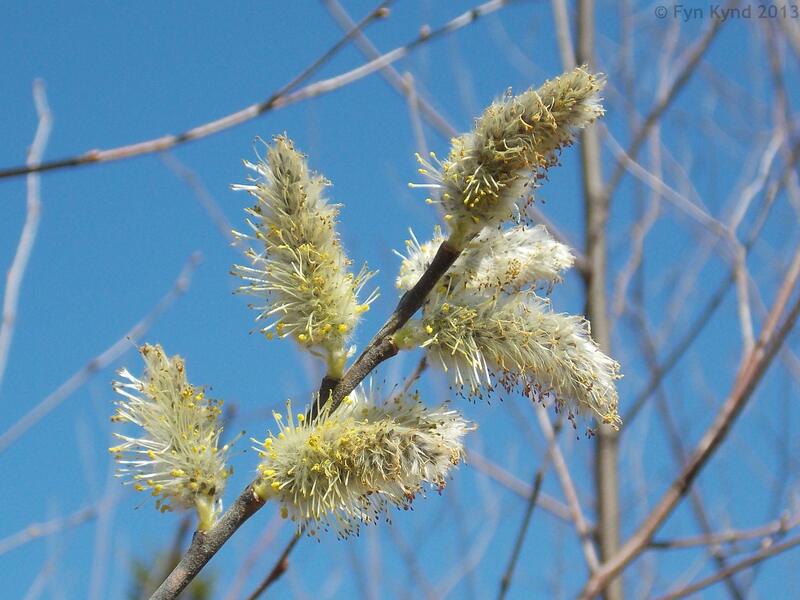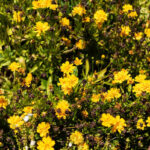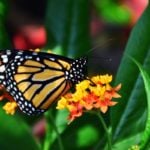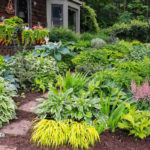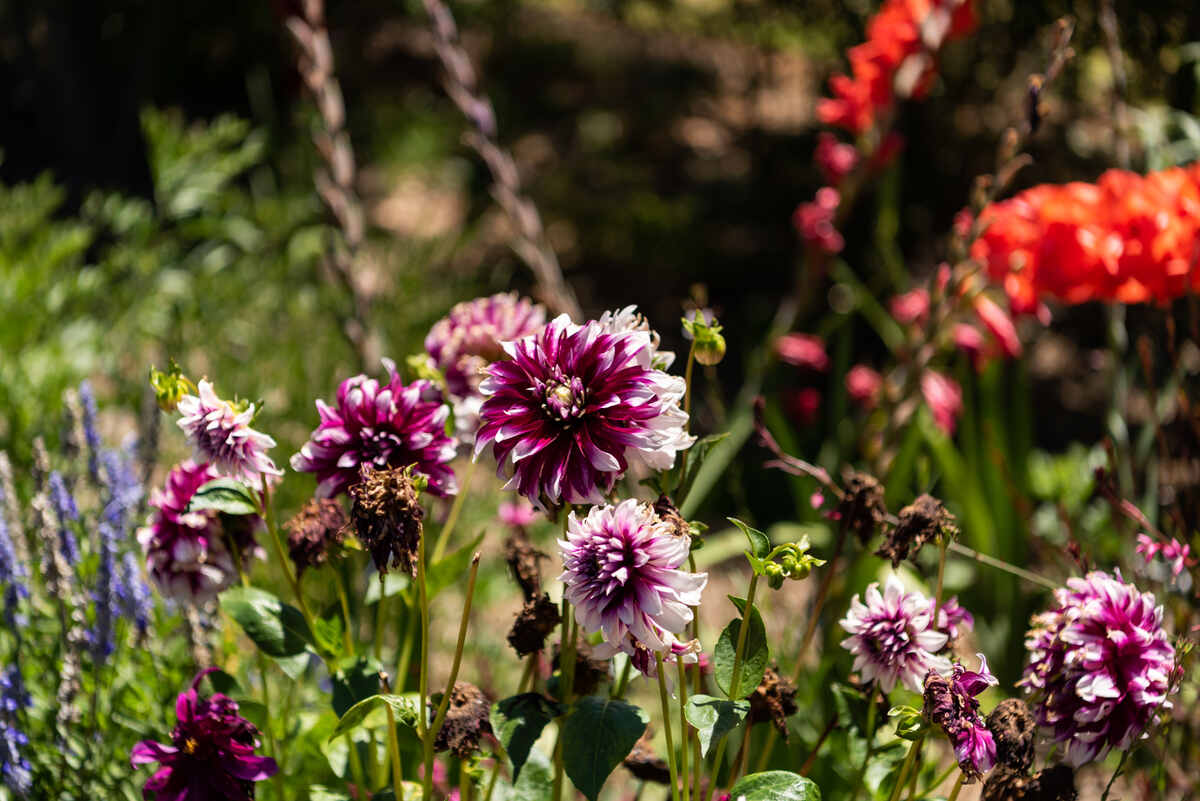
What are the best sensory garden plants to stimulate our five senses? Various trees, shrubs, flowers, and grasses can heighten all of our senses — sight, hearing, taste, touch, and smell.
For example:
- Lavender and mint provide sweet scents
- Glossy leaves from rose plants provide a rich texture.
- Ornamental grasses offer sound from the wind.
- Vibrant colored blooms add visual appeal.
- Edible fruits or herbs offer delightful tastes.
What is a sensory garden? A sensory garden is an outdoor space in the landscape designed to have various plants and other elements that stimulate, heighten, and engage your five senses — sight, sound, taste, touch, and smell.
Incorporating the best sensory garden plants into your garden will create an enjoyable and calming environment that helps build an emotional connection with nature.
In this article, we’ll cover the following:
Sensory Garden Plants That Simulate Each Sense
Let’s take a closer look at plants that stimulate each of our senses. The plants are clustered under the sense they stimulate the most and we have included each plant’s “stats.”
Sight
For a pleasurable visual experience in the home garden, select plants that provide contrasting shapes, different textures, diverse colors, and forms. Consider trees known for their pendulous drooping branches and shrubs with delicate spiky flowers shooting out of sword-like branches.
Flowering plants with bright, vibrant hues like zinnias, marigolds, sunflowers, and nasturtium and the subtle movement of the foliage in even the slightest breeze are some of the features you want to see.
Sensory garden ideas for sight could include certain plant species that attract pollinators, songbirds, butterflies, hummingbirds, and bees.
Seating areas are great next to water features to reflect and watch the water cascading into a base. Consider a trellis along the path surrounded by seed pods for an extra boost of a visual sensory experience.
The reflection of moonlight on a pond featuring colorful koi fish, or even just the subtle yet pleasing visual of the slight movement of bamboo wind chimes of chimes creating mild, muted clicks that bring a sense of peace and tranquility to your outdoor space.
Butterfly Bush (Buddleia davidii)
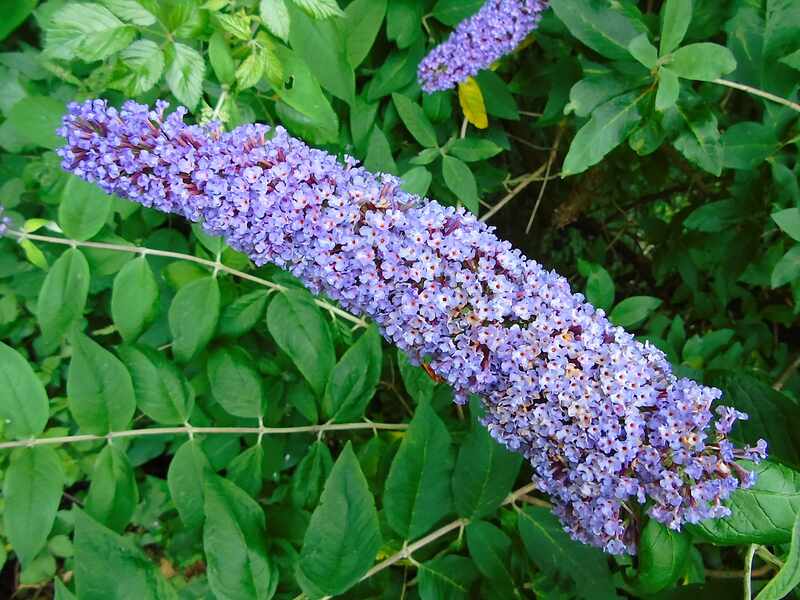
A butterfly bush is a beautiful shrub that attracts butterflies into your summer garden. Butterfly bush is extremely easy to grow, and any novice gardener will have success with this genus. This showstopper of a butterfly draw will provide you with a beautiful visual performance!
Plant type: Deciduous shrub
Habit: Arching
Sun: Full sun
Soil Type: Moist but well-drained soil of average fertility, but isn’t too finicky about soil type
Soil Acidity: 6.0-7.5
Average height: 5-10 feet high
Mature height: Up to 15 feet high
Bloom time: Mid-summer to early fall
Colors: White, purple, blue, pink, yellow, orange, or a reddish-purple color that marketers like to call “red.”
Hardiness Zones: 5-9
Note: In the colder zones, butterfly bush will die to the ground yearly like a perennial plant, but in more southern regions, the plant is somewhat evergreen. In warmer states, butterfly bushes often grow to 10 or 12 feet high and require pruning to keep them shapely.
Weeping Willow (Salix babylonica)
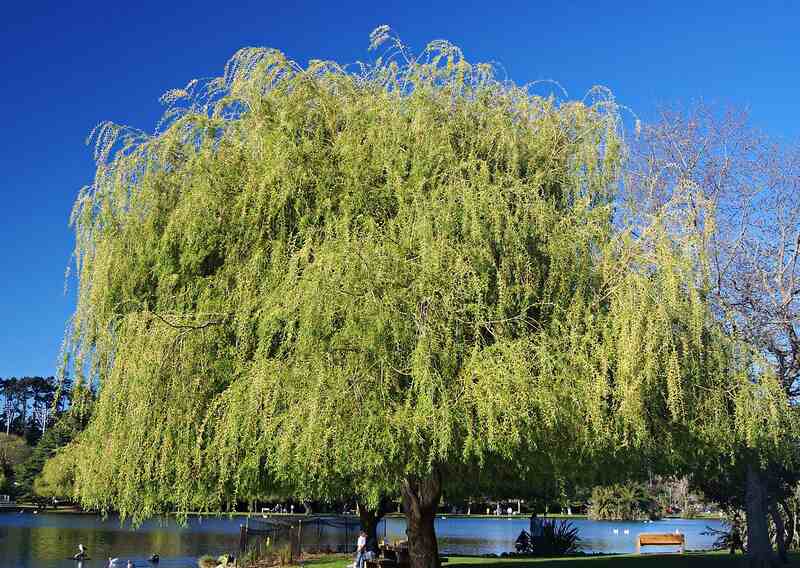
When you gaze upon a weeping willow tree, the sight before you is enchanting and serene.
The shape of the willow is full and graceful, with long slender branches gracefully arching from the trunk like ribbons blowing in the wind. The foliage is lush and beautiful, sprouting small oval-shaped leaves that flutter in the breeze.
This combination of visual textures creates a calming sensory atmosphere perfect for any outdoor space.
Plant type: Deciduous trees or large shrubs
Habit: Weeping
Sun: Full sun to partial shade, meaning at least 4 hours of direct, unfiltered sunlight per day
Soil Type: Moist, well-draining, slightly acidic soils. Loves wet soil.
Soil Acidity: Slightly acidic, moist soil
Average height: 15-40 feet high, depending on variety
Mature height: 30-40 feet high and a spread of around 35 feet
Bloom time: April and May
Colors: Yellow flowers borne on short catkins
Hardiness Zones: 4-10
Peace Rose (Rosa peace)
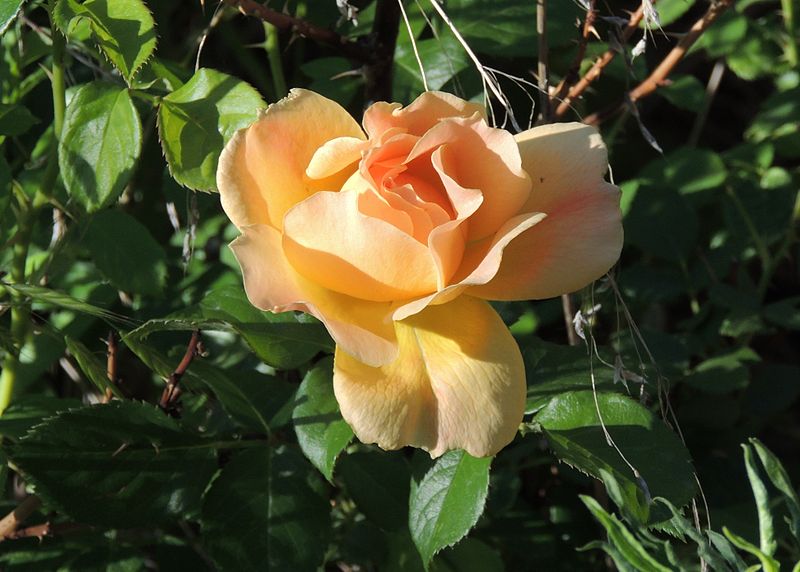
Your eyes will get lost in the flowers of the peace rose — creamy white petals that deepen to light buttercream yellow and as they age, a subtle hint of red to pink is more intense near the edge.
Heavy, straight stems hold the blooms aloft. Richly vibrant, glossy green leaves are a perfect visual foil to the bi-colored blooms. This is a stunner for visual perception.
Plant type: Hybrid tea rose (deciduous shrub)
Habit: Vigorous, bushy, upright, handsomely shaped shrub
Sun: Lots of sunshine and requires at least 6 hours of sunlight
Soil Type: Moist but well-drained, chalk, clay, loam, sand
Soil Acidity: Acid, alkaline, neutral
Average height: 4-7 feet high, 2-3 feet spread
Mature height: 7 feet high
Bloom time: Spring into fall
Colors: Pink-dusted margins on ivory-yellow blossoms
Hardiness Zones: 5-9
Smell
“Seasonal smells,” meaning different scents at different times of the year, is a vital concept for the selection of your best sensory garden plants that stimulate our senses.
During the winter, if you reside in the Northeast, pine and bayberry can bring you scents of Christmas and remind you of the holiday season.
In the summer, the sultry scent of honeysuckle brings thoughts of summer as the intoxicating fragrances waft through the air captivating your attention.
Planting plants with strong scents, such as lavender, can add a delightful fragrance, especially in the spring and summer months. Try experimenting with different plants and enjoy the smells from the pleasant environment in your own sensory garden.
Japanese Honeysuckle (Lonicera japonica)
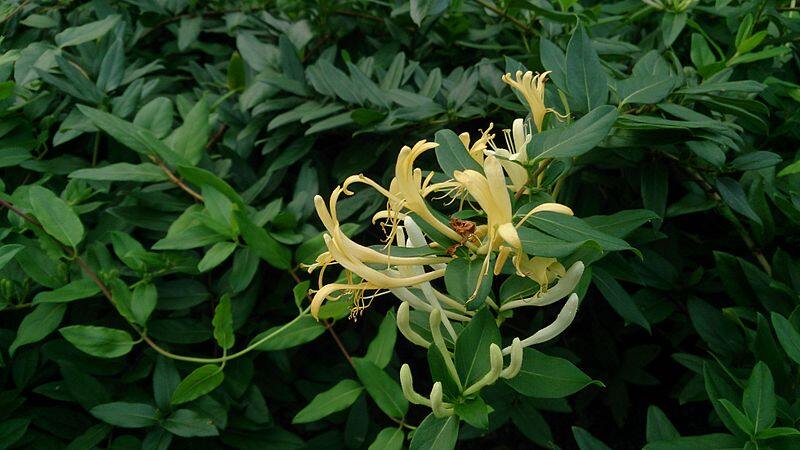
As you wander through the garden at dusk on a warm summer evening, Japanese honeysuckle, a woodland climber with white and yellow trumpet-like blossoms, fills the air with delightful hints of jasmine and vanilla.
Many of us have picked this twining vine’s blossom and sucked the honey from the base giving up dewy sweet nectar.
Plant type: Perennial, deciduous to semi-evergreen twining vine
Habit: Woody vine
Sun: Full sun to shade
Soil Type: Prefers moist, loamy soils, but dry conditions help slow down its rampant growth
Soil Acidity: Acid to moderately alkaline soil with ranges from 5.5 to 8.0
Average height: 10-30 feet high depending on the variety
Mature height: 30 feet high depending on the variety
Bloom time: April-July, September-October
Colors: Fragrant white flowers
Hardiness Zones: 4-9
English Lavender (Lavandula Angustifolia)
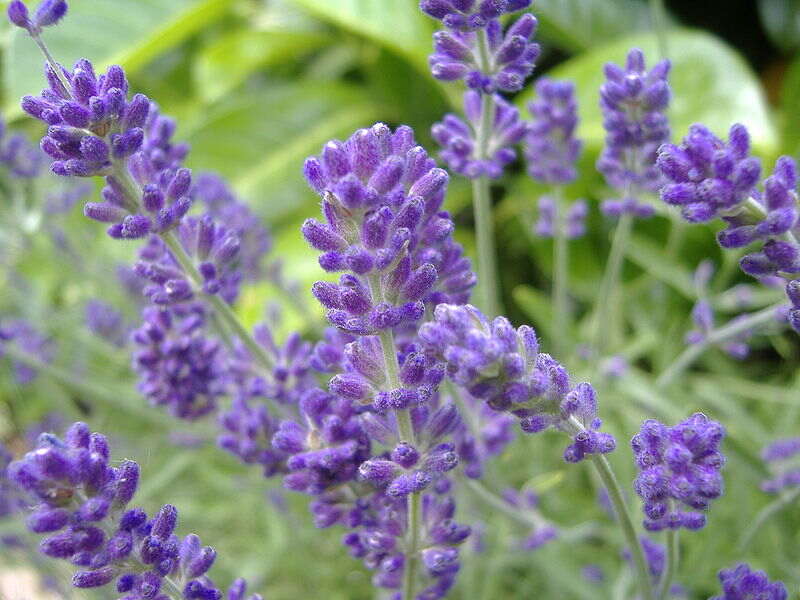
This 2 to 3-foot perennial with its fragrant purple flowers (a combination of floral, herbal and evergreen woodsy scent) is perfect along a walkway or as a shorter plant used in the foreground.
English lavender has been appreciated for centuries as it was widely used as a perfume for royals. It is a must-have for a unique olfactory sensory experience.
Plant type: Herbaceous perennial
Habit: Semi-woody growth habit
Sun: Full sun
Soil Type: Relatively sandy or gritty but very well-draining soil
Soil Acidity: Well-drained, slightly alkaline soil with a pH between 6.7 and 7.3
Average height: 2½ to 4 feet high, 1-5 feet spread
Mature height: 4 feet high
Bloom time: June or July and tends to last 3-4 weeks.
Colors: Highly scented dark purple flowers
Hardiness Zones: 5-10
Peppermint (Mentha × Piperita)
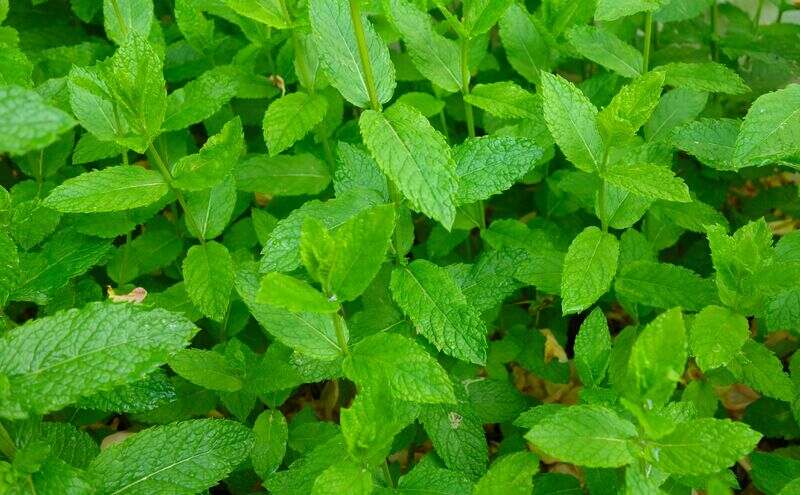
Mint provides an unmistakable aroma thanks to the menthol in the herb. If you’ve ever rubbed Vicks VapoRub on your chest when you were sick, that aroma that emanates from the vaseline is the best way to describe its scent.
This herb crosses into the taste sensation as well. It offers a distinctive sweet taste that has been described as a cooling sensation on the tongue. Typically, the peppermint’s leaves are eaten and not the flowers.
This squatty, hardy herb is often vigorous and spreads by stolons to form large colonies in the garden. Tiny pale purple, pink, or white flowers appear.
Plant type: Medicinal herb, ground cover
Habit: Ground cover that spreads with underground runners
Sun: Partial shade
Soil Type: Sandy, loamy, and clay soils, moist and well-drained
Soil Acidity: Neutral soils of 6.0-7.0 pH
Average height: 18-36 inches high and 24 inches wide
Mature height: 36 inches high
Bloom time: July-August
Colors: Pink
Hardiness Zone: 5-9
Southern Magnolia (Magnolia grandiflora)
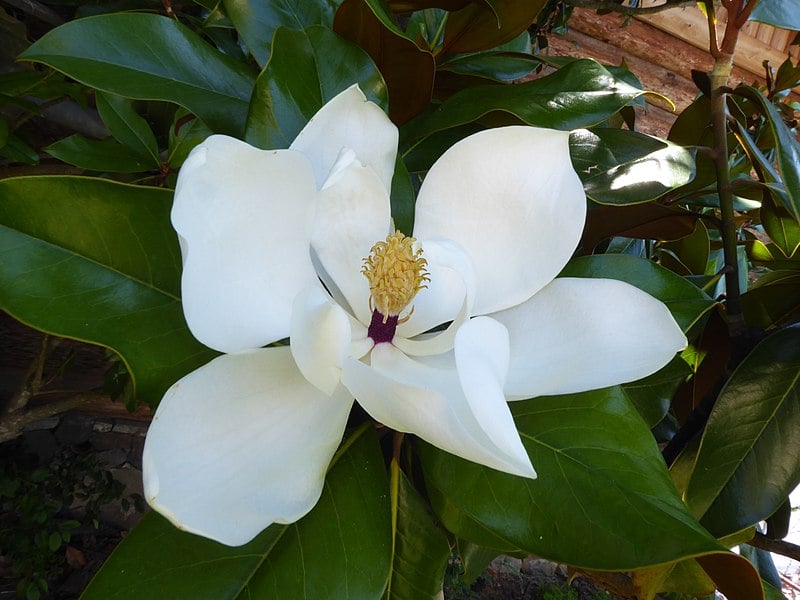
The Southern magnolia is a beautiful evergreen tree with flowers that emit a scent that has been described as a combination of sweet floral notes, citrusy lemon, earthy musk, anise, licorice, and even some traces of vanilla.
When in bloom, the creamy-white blossoms add a wonderful fragrance to the air and a lovely aesthetic charm to the surrounding landscape.
Plant type: Evergreen tree
Habit: Large, beautiful, saucer-shaped
Sun: Partial shade or full sun
Soil Type: Well-drained, loamy, moist, rich soils
Soil Acidity: Acidic (pH 5.0 to 6.0)
Average height: 60-80 feet high
Mature height: 80 feet high
Bloom time: May-June
Colors: Cream or white
Hardiness Zones: 7-9
Touch
Tactile sensation has an important role in sensory gardens so the best sensory garden plants for tactile sensation should invite touch and exploration. Think about texture by including soft velvety flowers, fuzzy leaves, rough bark, prickly seed pods, smooth stones, and springy moss.
Even succulent plants with their fleshy water-holding leaves can add a fun and interesting tactile experience!
Lamb’s Ear (Stachys byzantine)
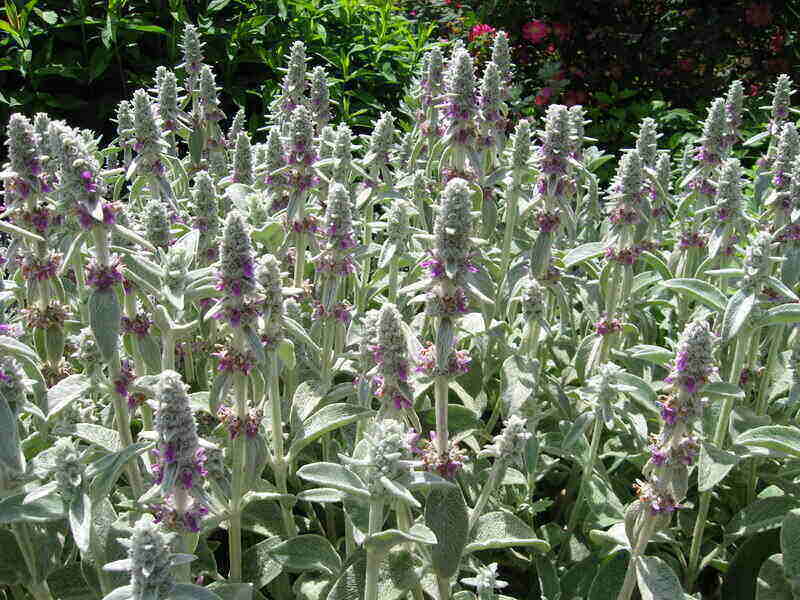
Lamb’s ear is a popular silver-leaved herbaceous perennial ground cover in the Lamiaceae or mint family. The plant grows into a dense clump of thick, soft, velvety, silver-green leaves that form a low-spreading ground cover. Lamb’s ear is evergreen in warmer climates.
Lamb’s ear is named for its furry leaves, which feel like a lamb’s ear to the touch. It’s perfect for sensory gardens as children can interact with it and enjoy the unique texture.
Plant type: Ground cover
Habit: Rapidly spreading mat
Sun: Full sun
Soil Type: Dry to medium moisture
Soil Acidity: Slightly acidic to slightly alkaline
Average height: 4-6 inches high
Mature height: 6 inches high
Bloom time: Late spring to early summer
Colors: Insignificant
Hardiness Zones: 4-8
Silver Grass (Miscanthus sinensis)
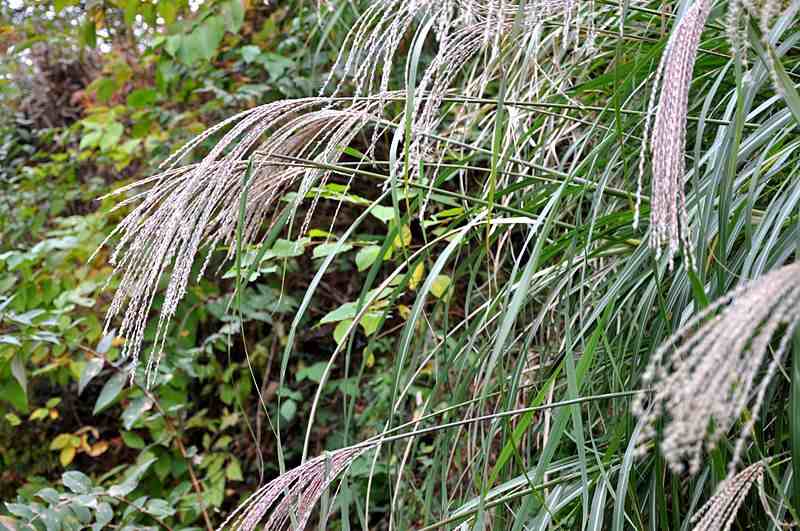
Silver grass is a tall, elegant grass with fine blades that arch over gracefully. Its silvery-green color gives the grass an eye-catching sheen that is especially visible when the blades sway in the breeze.
Running your hands through the fine blades and feeling the delicate foliage is intriguing.
Plant type: Herbaceous perennial deciduous grass
Habit: Long arching branches and leaves that spread or droop and form clumps
Sun: Full sun
Soil Type: Moderately fertile, moist, well-drained soils
Soil Acidity: Acid, neutral, and basic (alkaline) soils
Average height: 3-7 feet high
Mature height: 12 feet high
Bloom time: Late August to October
Colors: Pink to red flowers turn beige by mid-fall
Hardiness Zones: 5-9
American Pussy Willow (Salix discolor)
Pussy willow is a narrow shrub or small tree usually growing to 20 feet tall with multiple trunks and dark-gray, scaly bark. The branches comprise furry buds called “pussies,” also known as catkins.
If you close your eyes while touching these fuzzy buds, they really do feel like tiny cat paws.
Plant type: Wetland plant, native deciduous shrub
Habit: Upright and spreading habit, forms a small multi-stemmed tree
Sun: Full sun to part shade
Soil Type: Loamy, moist, rich soil. It likes to be kept wet
Soil Acidity: Acidic, loamy, neutral
Mature height: 6-25 feet tall, 4-15 feet wide
Bloom time: January-May
Colors: White
Hardiness Zones: 4-5 in the north, 6-8 in warmer climates but will grow slower
Taste
Plants that are edible in gardens are all the rage these days, and with good reason! Not only can you create a beautiful landscape to admire — you can also add a variety of plants that provide tasty treats.
You’ll find fruit-bearing trees, culinary herbs, vegetables, and flowers with edible parts like nasturtiums and pansies to taste and enjoy.
Start small by planting one or two plants in your yard – and soon enough, you’ll eat from your garden! Edible gardening has become very popular in our age of sustainability and “off-the-grid” lifestyles.
Here are just a few ideas to incorporate into your sensory garden for a “tasteful” experience. Careful planning is needed when designing the garden layout because certain vegetables grow better next to others. Certain scents are better combined, while others can clash.
For example, you don’t want chives growing next to mint.
Edible flowers such as pansies, curry plants, allium (onions), and violets are beautiful and tasty. They might make a nice area planting in between the herbs and veggies.
Highbush Blueberry Bush (Vaccinium corymbosum)
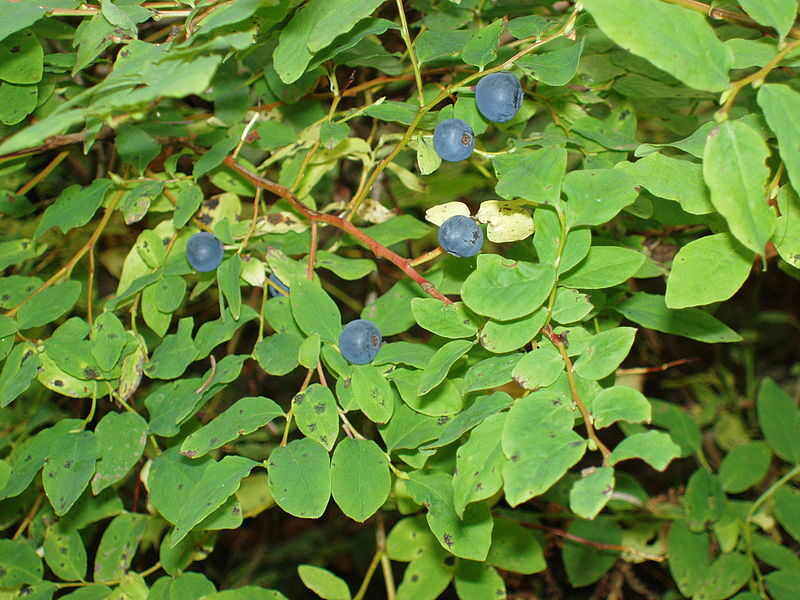
Highbush blueberry bushes require patience and care but can live for many decades and reward your edible garden with abundant harvests over the years.
It typically takes up to 10 years for these plants to reach full maturity and produce a decent-sized crop, but even within the first two or three years, you may be able to enjoy small harvests of ripe berries!
Bonus points? Blueberries are good for your health.
Plant type: Upright, multi-stemmed, slow-growing deciduous shrub with edible fruit
Habit: Compact
Sun: Full sun works best
Soil Type: Moist, acidic, organic, well-drained soil
Soil Acidity: pH of 4.0-5.2
Average height: 5-8 feet high
Mature height: 8-15 feet high (6-8 years to reach full production)
Bloom time: Blue to purple small round fruits that show up in August, ripening from a green to pink color to full ripeness.
Colors: Blue to purple fruit
Hardiness Zones: 3-9
Violet (Violet odorata)
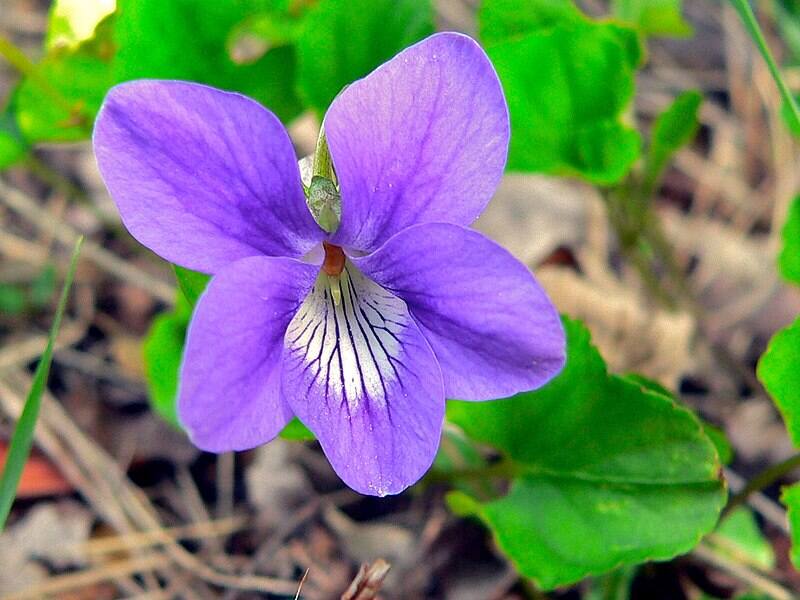
These tasty, highly fragrant flowers will tempt your taste buds in any sensory garden. The leaves of edible violets have a slightly lettuce-like taste that pairs well with sweet peas.
With their sweet and floral taste, edible violets can be used to create beverages, desserts, and even salads!
Violets can be enjoyed in many ways, such as syrups, teas, and baked goods. In addition to adding flavor to dishes, edible violets are perfect for use as garnishes on salads and soups.
Plant type: Typically grown as perennials, but also can be grown as biennials or annuals
Habit: Compact
Sun: Moist, shaded areas, partial sun
Soil Type: Black fertile loam, moist to medium soil
Soil Acidity: Slightly acidic pH of between 5.4-5.8
Mature height: 3-5 inches high
Bloom time: Toward the end of early spring, into the start of mid-spring.
Colors: Purple/blue flowers
Hardiness Zones: 3-9
Wild Strawberries (Fragaria vesca)
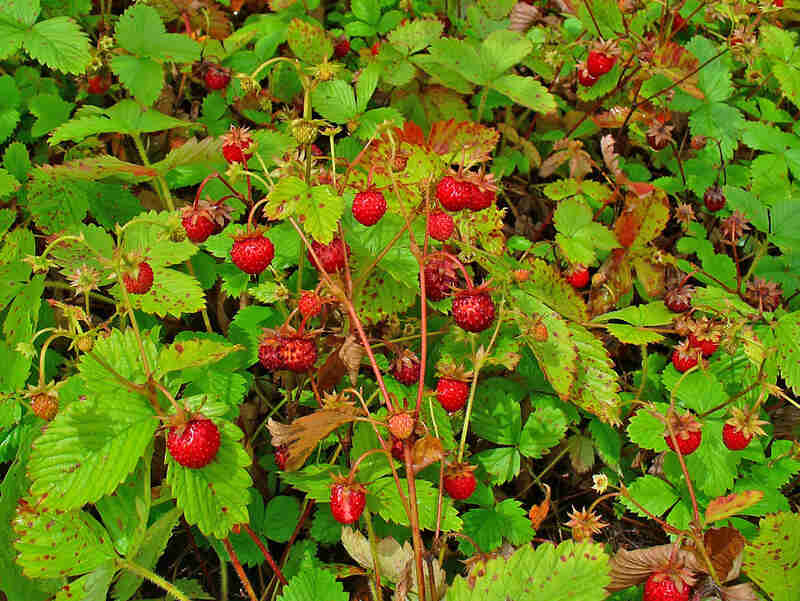
Wild strawberries offer an irresistible tasting experience to those exploring a sensory garden. Compared to regular strawberries, these wild ones have a much more intense flavor characterized by notes of sweetness, floral aromas, and a pleasant touch of acidity.
Plant type: Perennial herbaceous plant in the rose family
Habit: Trailing with underground runners
Sun: 10+ hours each day is ideal
Soil Type: Well-drained, loamy soil that has lots of organic matter
Soil Acidity: 5.5 and 6.5
Average height: 4-7 inches high
Mature height: 7 inches high
Flowering time: April to June then strawberries arrive for the entire summer
Colors: Flowers have five white petals surrounding a yellow center, then red strawberries arrive.
Hardiness Zone: 3-10
Hearing
With a bit of effort, you can hear your sensory garden. The buzzing of hummingbirds, the singing of cicadas, the chirping of crickets, and the gentle sound of a water fountain.
To encourage wildlife to come to visit, consider adding bird feeders, birdbaths, or insect houses. Wind chimes made of metal or bamboo add an additional layer of background melodies as they dance in the breeze.
Flowering Dogwood (Cornus florida)
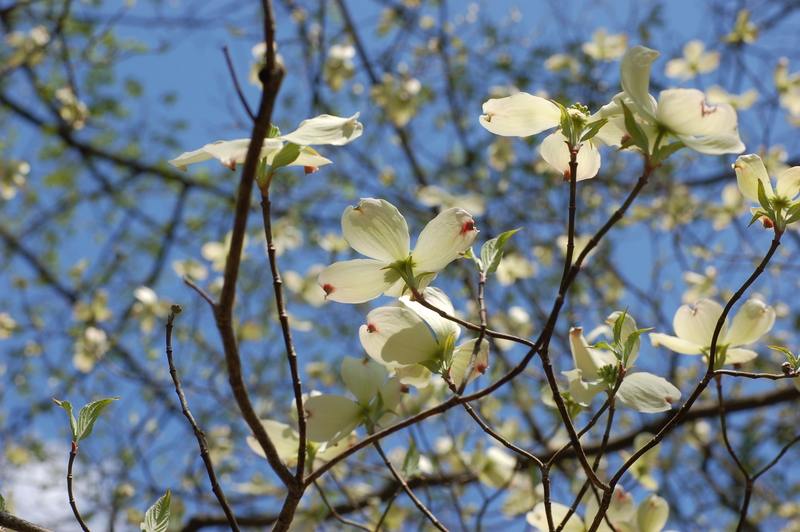
Dogwood trees offer so much more than just visual beauty, they stimulate our auditory senses by attracting songbirds and wildlife. In spring, their flowers come alive with buzzing bees and colorful azure butterflies who rely on the nectar for food.
Birds such as robins, northern mockingbirds, and sparrows use the dogwood’s horizontal branches to build nests. Other creatures seek shelter within their leaves for a cozy retreat.
Plant type: Ornamental deciduous tree
Habit: Upright to rounded habit, crown is round to flat-topped
Sun: Full sun
Soil Type: Well-drained, fertile, and moderately moist soil
Soil Acidity: slightly acid soil 5.5 to 6.0
Mature height: 20 feet high with 30 foot wide canopy
Bloom time: Mid-late April through early May
Colors: White flowers
Hardiness Zones: 8-9
Winterberry (Ilex verticillata)
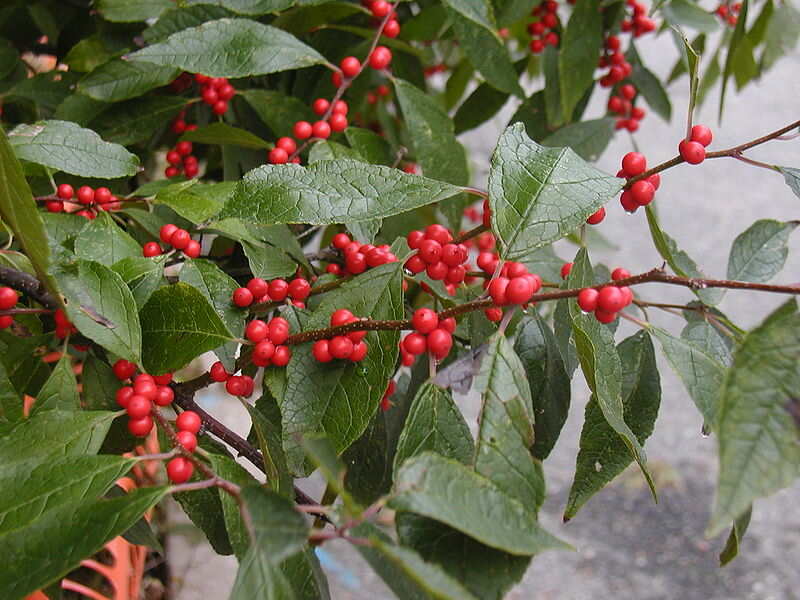
Winterberry is a native deciduous holly shrub that stands out with its bright red berries that last throughout the fall and winter months. Its cheerful red color in the midst of a snowy landscape is pleasantly inviting but also beneficial to songbirds as they feed off its fruits during the colder days.
Additionally, this sensory garden favorite is a welcome sight for birdwatchers and wildlife admirers who enjoy listening to birds singing around their beloved winterberry!
Although many winter berries are too bitter and unsafe to consume whole as raw berries, they do make delicious pies, wine, syrups, and jellies.
Plant type: Deciduous holly shrub
Habit: Female cultivar with an upright habit
Sun: Full sun 6+ hours, part sun 4-6 hours, full shade up to 4 hours
Soil Type: Moist, acidic, organic loamy
Soil Acidity: Low pH 6-6.5
Average height: 6-12 feet high
Mature height: 15 feet high
Bloom time: Late spring for flowers, bright red berries in late summer to fall. Berries persist throughout the winter and often into early spring.
Colors: Inconspicuous greenish-white flowers
Hardiness Zones: 3-9
Common Bamboo (Bambusa vulgaris)
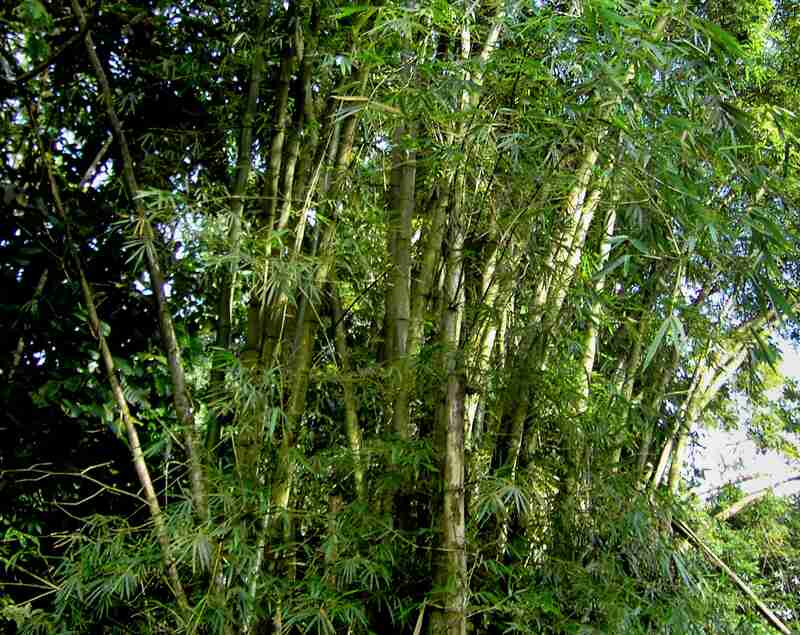
The rustling sound of bamboo gently blowing in the wind is widely known as “bamboo’s song,” and many people find it to be a soothing and pleasant sound. This song originates from the dense clumps of bamboo, as the winds that pass through them are partially blocked, creating a whispery flute-like noise.
Buddha was said to have meditated in a bamboo forest, likely due to the calming environment this music creates. With over 1,500 uses, it is easy to understand why bamboo has been an important material since ancient times.
Plant type: Perennial flowering clumping bamboo
Habit: Open clump
Sun: At least 6 hours of direct sun per day
Soil Type: Loamy, well-drained soil
Soil Acidity: Slightly acidic with a pH level of about 6
Mature height: 15-39 feet high
Bloom time: 3 to 150 years
Colors: insignificant flowers nothing showy, looks like a stalk of rice or barley
Hardiness Zones: 8-10
FAQ About Sensory Garden Plants
Plant “stats” watering requirements are not listed above because requirements vary from plant to plant, zone, location of plants on a property, soil type, newly installed vs. established plants, and rain.
The amount a plant needs depends on its size and shape, as larger plants require more energy, and photosynthesis relies on an adequate water supply. Therefore, some plants may need more of the precious liquid to grow and thrive.
For example, trees require more water than shrubs. Some plants love wet feet, while others’ roots will choke on standing water.
Not all plants are suitable for inclusion in a sensory garden. Here are some examples:
Highly toxic plants, such as poison ivy and foxglove, should never be used, as well as those with spines, like cacti. Incorporating edible plants into a sensory garden requires extra care since some edible fruits, such as elderberries, are toxic when eaten raw.
Hot and spicy plants, such as ornamental peppers, should also be avoided because of their potential to irritate skin or burn mouths.
Hummingbirds are drawn to flowers with brightly colored and tubular shapes as these often have high amounts of nectar.
Some perennials that make the best food sources for hummingbirds include bee balms, columbines, daylilies, lupines, and more.
Biennials like foxgloves, hollyhocks, and many annuals like impatiens and petunias also work great.
Sensory gardens look beautiful and allow vivid memories to be triggered via a phenomenon known as the “Proust effect.”
This theory suggests that certain smells have an exceptional capacity to evoke powerful memories from our past.
Scented geraniums, called pelargonium, chamomile, and gardenias, might remind you of your grandmother’s garden.
Therefore, selecting scented and aromatic plants as part of your sensory garden will ensure that you can create a multi-sensory experience with limitless potential!
Sensory garden plants are also used in rehabilitation centers, retirement homes, adult day care facilities, and memory care centers.
In fact, there is an assisted living facility near me with a fantastic horticultural section and a giant greenhouse. Patients with various issues such as spinal injuries, dementia, and disabilities can reap the benefits of sensory gardening.
I visited there and instantly fell in love with the greenhouse. As I entered, I noticed the damp, humid air and the aroma of cherry tomatoes and mint. There were several raised wooden planters filled with flowering plants, herbs, fruits, and vegetables. I watched as the patients interacted with nature indoors.
Some of the patients had pulled their wheelchairs up to the wooden planter boxes to feel the moist damp dirt between their fingers. They were placing seeds gently into the soil. Soft classical music played in the background adding to the calming environment. I just wanted to stay there all day.
When to Call a Landscaping Pro
If you decide you’d like to create your own sensory garden and don’t know where to start, it’s best to call upon the experts. LawnStarter makes it easy to find a landscaping pro near you who can help you turn your vision into reality. Landscaping pros have the knowledge, expertise, and experience to be able to create a beautiful garden to stimulate all of your senses.
Main Image Credit: Bryce Walker / Flickr / CC BY 2.0
